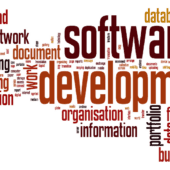The rapidly evolving landscape of software development presents a dynamic array of career opportunities. As new technologies emerge and industries evolve, software developer roles continue to diversify, demanding specialized skills and expertise across different domains. This article guide delves into the 18 key types of Software Developer Roles, exploring their roles, required skills, and unique contributions to the industry.

1. Front-End Developer: Crafting User-Centric Interfaces
Front-end developers focus on creating visually engaging and user-friendly interfaces for web and mobile applications. Their work involves designing and implementing the layout, aesthetics, and interactive elements that users directly engage with. Proficiency in HTML, CSS, JavaScript, and various UI frameworks such as ReactJS and AngularJS are essential. These developers excel in user experience (UX) design, ensuring intuitive navigation and seamless interaction. Front-end developers play a crucial role in bridging the gap between aesthetics and functionality, enhancing user satisfaction.
2. Back-End Developer: Building the Backbone of Software Systems
Back-end developers are responsible for the server-side logic, databases, and APIs that power software applications. Their expertise lies in developing scalable, secure, and efficient systems that handle data storage, retrieval, and communication between the server and client-side. Back-end developers typically work with languages such as Python, Java, Ruby, C++, and .NET, and they are well-versed in database management, including SQL and NoSQL solutions. Their role is critical in ensuring the smooth operation of applications behind the scenes.
3. Full-Stack Developer: Master of Both Front-End and Back-End Development
Full-stack developers possess a comprehensive skill set that spans both front-end and back-end development. Their versatility enables them to create fully functional software systems, handling everything from user interfaces to server infrastructure. Proficiency in a combination of front-end technologies (e.g., HTML, CSS, JavaScript) and back-end frameworks (e.g., Node.js, Ruby on Rails) is essential. Full-stack developers are highly sought after for their ability to manage entire projects, offering end-to-end solutions.
4. Middle-Tier Software Developer: Connecting Front-End and Back-End Components
Middle-tier software developer roles specialize in writing non-UI code that operates between the front-end and back-end systems. They focus on creating the “middleware” or “business logic” that facilitates communication between the user interface and the database. Middle-tier developers often work with APIs, web services, and microservices, ensuring smooth data flow and application functionality. Their work is pivotal in maintaining the coherence and efficiency of software systems.
5. Mobile Software Developer: Innovating on the Go
Mobile software developer roles are to create applications for mobile devices, including smartphones and tablets, across different platforms such as iOS, Android, and Windows. Their expertise extends to platform-specific programming languages like Swift, Kotlin, Objective-C, and cross-platform tools such as React Native and Flutter. Mobile developers must understand mobile operating systems and hardware limitations, enabling them to deliver optimized and responsive applications.
6. Desktop Software Developer: Crafting Standalone Software Solutions
Desktop software developer roles are to focus on building software that runs locally on desktop operating systems, including Windows, macOS, and Linux. They are skilled in utilizing GUI toolkits such as XAML, Cocoa, and WinForms to create user-friendly applications. Their work often involves creating productivity software, utilities, and other standalone programs that do not rely on web or mobile platforms.
7. Embedded software developer: Integrating Software with Hardware
Embedded software developer roles to work on systems where software directly interacts with hardware components, often in non-traditional computing devices. This includes developing software for microcontrollers, real-time systems, IoT devices, consumer electronics, and hardware drivers. Proficiency in low-level programming languages such as C, C++, and Assembly is critical for these developers, who must optimize their code to work efficiently with limited resources.
8. Database Software Developer: Structuring and Managing Data
Database software developer roles, also known as database programmers, design, implement, and maintain databases that store and manage large volumes of information. They are skilled in SQL, PL/SQL, and database management systems such as MySQL, PostgreSQL, and MongoDB. Database developers ensure data integrity, optimize query performance and troubleshoot issues to support the broader software system.
9. Cloud Software Developer: Architecting in the Cloud
Cloud software developer roles and specializes in designing, deploying, and managing cloud-based systems and applications. They work with cloud platforms such as AWS, Microsoft Azure, and Google Cloud, utilizing cloud-native tools and services to build scalable and secure infrastructure. Cloud developers are also responsible for ensuring compliance with security standards and managing cloud resources efficiently.
10. Security Software Developer: Fortifying Software Systems
Security software developer roles are focused on protecting software systems from vulnerabilities and attacks. They create tools, systems, and processes to identify security risks and implement solutions to mitigate them. Security developers are skilled in ethical hacking, cryptography, and secure coding practices, and they often work with languages like Python, C, C++, and Ruby. Their role is essential in safeguarding sensitive data and ensuring software resilience against cyber threats.
11. Software Development Engineer in Test (SDET): Ensuring Quality Through Automation
SDETs are responsible for developing automated testing frameworks and tools to verify the functionality and quality of software systems. They create scripts and systems that simulate user interactions, validate performance, and detect defects. SDETs work closely with development teams to ensure that software meets the highest standards of reliability and usability. Their expertise in languages such as Python, Ruby, and testing tools like Selenium is vital to their success.
12. DevOps Software Developer: Bridging Development and Operations
DevOps software developer roles are to combine software development with IT operations, focusing on continuous integration, delivery, and deployment. They create and maintain the infrastructure and tools needed to automate and streamline the software development lifecycle. DevOps developers are proficient in technologies like Docker, Kubernetes, Jenkins, and Ansible, and they play a key role in ensuring that software can be reliably built, tested, and deployed at scale.
13. Data Science Developer: Unlocking Insights Through Data
Data science developers write programs that analyze large data sets, enabling organizations to make data-driven decisions. Their work involves statistical analysis, machine learning, and predictive modeling, using languages such as Python, R, and libraries like TensorFlow and Scikit-learn. Data science developers are at the forefront of extracting actionable insights from complex data, driving innovation and strategic decision-making.
14. Big Data Software Developer: Harnessing the Power of Massive Data Sets
Big data software developers specialize in processing and managing vast amounts of data, often in distributed systems. They work with frameworks such as Hadoop, Spark, and MapReduce to store, retrieve, and analyze data across large-scale infrastructure. Big data developers use languages like Java, Python, R, and SQL to build data pipelines, enabling organizations to leverage big data for insights and competitive advantage.
15. Game Developer: Creating Immersive Entertainment
Game developers design and build interactive gaming experiences across various platforms, including web, mobile, desktop, and VR. They possess specialized skills in game design, physics simulation, AI, and graphics programming. Game developers use tools like Unity 3D, Unreal Engine, and frameworks like DirectX and OpenGL to bring immersive and engaging games to life. Their work requires a deep understanding of both creative and technical aspects of game development.
16. Graphics Software Developer: Engineering Visual Excellence
Graphics Software Developer roles are focused on creating advanced rendering techniques, lighting models, and visual effects for applications in gaming, film, and visualization. They work with technologies like DirectX, OpenGL, and WebGL, and often require low-level programming skills in C, C++, and Assembly. Graphics developers contribute to creating realistic and visually stunning digital experiences, pushing the boundaries of visual computing.
17. Customization Developer: Tailoring Software to Specific Needs
Customization developers specialize in modifying and extending existing software solutions to meet the unique needs of businesses. They work with SaaS platforms such as Salesforce, Shopify, Magento, and WordPress, adding custom features and integrations. Customization developers enhance the functionality of out-of-the-box software, ensuring it aligns with specific business requirements and improves overall user satisfaction.
18. AI Engineer: Innovating with Artificial Intelligence
AI engineers develop cutting-edge AI-based applications and systems, leveraging machine learning, natural language processing, and computer vision. They work with frameworks such as TensorFlow, PyTorch, and Keras, as well as programming languages like Python, Java, and R. AI engineers are responsible for designing, training, and deploying complex AI models, often working with big data technologies to process and analyze vast datasets. Their work drives innovation in areas such as autonomous systems, healthcare, and finance.






